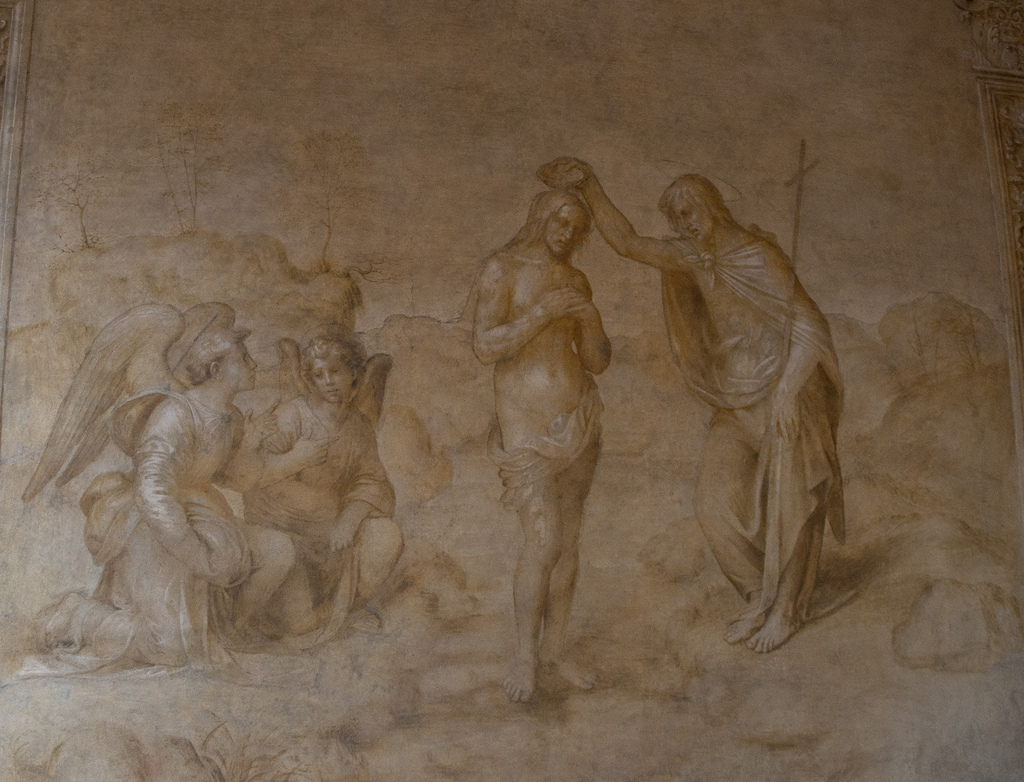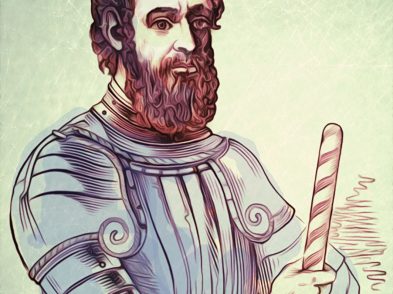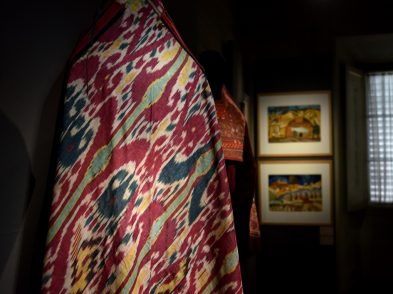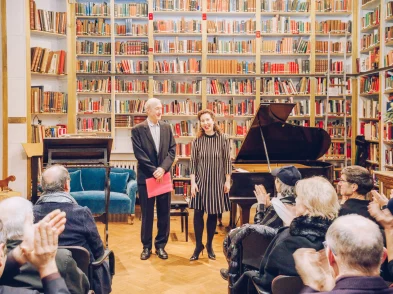Those looking for an art-filled, meditative spot without Florence’s summer crowds should make a quiet visit to the Chiostro dello Scalzo, located on the city’s ultra-central via Cavour, just past the church of San Marco. With any luck, you’ll be alone to admire its 16 frescoes, 14 of which were created by one of the greatest exponents of the Florentine Mannerist period, Andrea del Sarto (1486-c.1530), known as ‘the artist without errors.’
THE FRESCOES
Because the frescoes are almost at eye-level, visitors can experience the mastery of an artist admired by Michelangelo and emulated by Pontormo. Del Sarto was also teacher to Giorgio Vasari, who later became his biographer, offering both lofty praise and scalding criticism. Though faultless, del Sarto lacked the ‘fire of Divine Inspiration’ that had characterized his Florentine predecessors, Vasari insisted, offering a series of personal vignettes that depict the artist’s so-called lack of ambition and constant submission to his ‘faithless’ and ‘vixenish’ wife. (Interestingly, del Sarto’s wife, Lucrezia del Fede, appeared as his muse in his paintings-often as a Madonna or a female virtue-and her portrait can be found in some of the Chiostro dello Scalzo frescoes.)
Vasari aside, during del Sarto’s short lifetime-the artist died at age 43 during an outbreak of the bubonic plague-he produced some of the most noteworthy examples of Florentine Mannerist art, and their elegance is considered matchless. His gray and brown grisaille fresco cycle series in the Chiostro dello Scalzo depicts the virtues Faith, Hope, Justice and Charity and the series depicting the Life of Saint John is truly a hidden gem. Del Sarto started with The Baptism of Christ in 1513 and finished with The Birth of the Baptist in 1526. It is interesting to see how his technique matured over the course of those years, especially his sculptural clarity. And the architectural setting of his frescoes set a new standard in monumental fresco painting. In general, del Sarto’s works were unrivaled at this time because of his use of color and his talent for creating atmosphere. These grisaille frescoes, executed in creamy brown-grey shades, are particularly unusual for the modern viewer, recalling sepia-toned photographs.
To execute these works, he would hold a cartoon (drawing) against the wall and, with a stylus, draw heavy lines tracing the picture, which left a faint line in the plaster. Otherwise, he would prick holes in the lines of the cartoon before placing it against the plaster and brushing charcoal dust on the drawing, which would leave a dotted outline in the pricked holes on the plaster. Look carefully at his Baptism of Christ: one can still see those tiny pricked holes on the surface of the wall.
The two scenes not painted by del Sarto were done by his Florentine friend and fellow painter, Franciabigio (1482-1525). The two artists set up a joint studio together in 1507, and in 1518 and 1519, when del Sarto was working in France, Franciabigio painted The Baptist Taking Leave of His Parents and Meeting of Christ and the Baptist.
THE CHIOSTRO DELLO SCALZO
This small, modest cloister was founded in 1376 by the Compagnia dello Scalzo, which got its name because members of the confraternity, dedicated to the life of Saint John the Baptist, walked barefoot (scalzo) in their rituals, as a sign of humility. Originally,the entrance to a chapel owned by the confraternity, little remains of the property today except the cloister, with its unusual pairs of columns and del Sarto’s delightful and original fresco cycle.
The confraternity lasted until 1786, when the property was sold. Used by the Accademia delle Belle Arti for a while, it was opened to the public in 1891. The frescoes, which had been exposed to the elements for centuries, were in dreadful condition, for only a partial wooden roof served to protect the cloister. In the early 1960s, the frescoes were detached from the walls for restoration and were returned to the cloister and reopened for public viewing in 2000. Today, a glass ceiling protects del Sarto’s precious works from the elements.
CHIOSTRO DELLO SCALZO
Via Cavour 69, Florence
Monday, Thursday and Saturday, 8:15am to 1:50pm
Free admission









